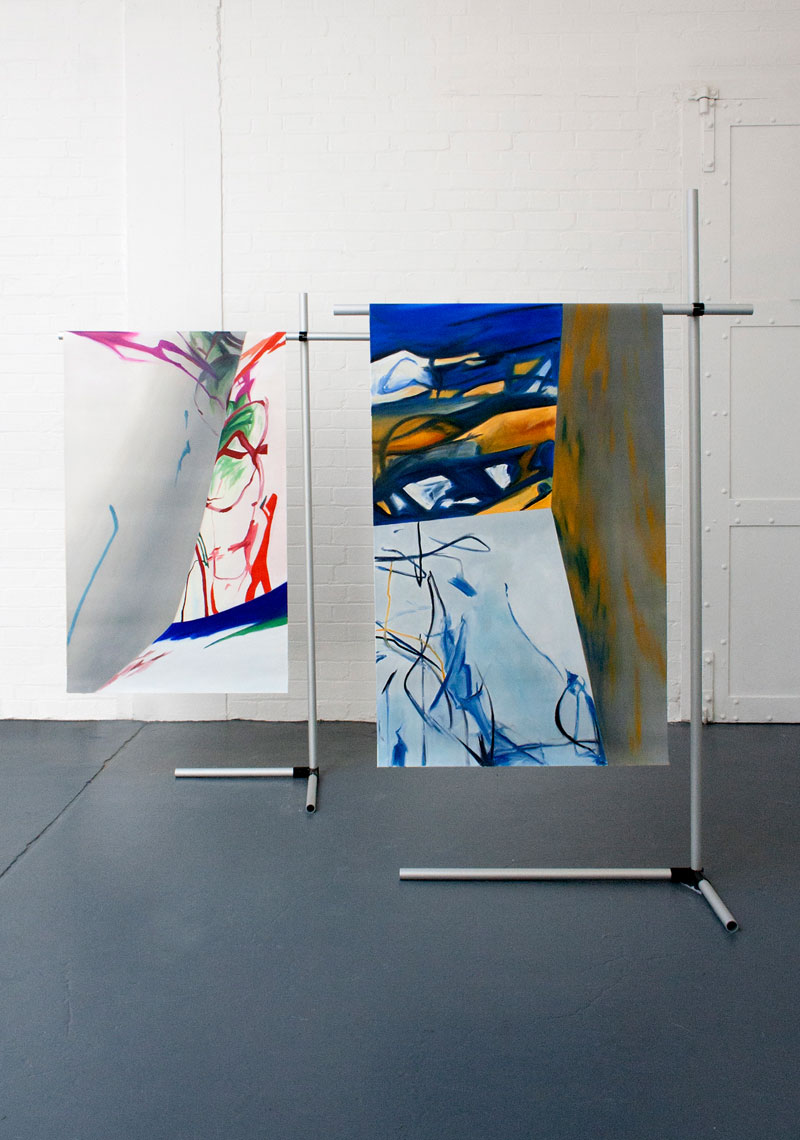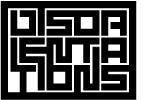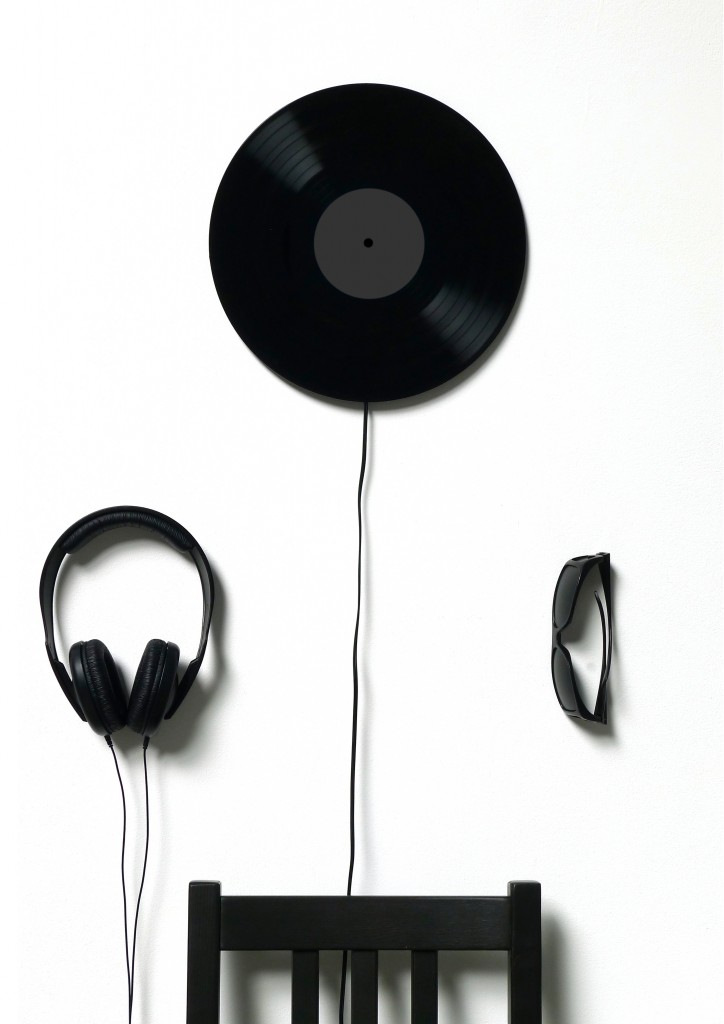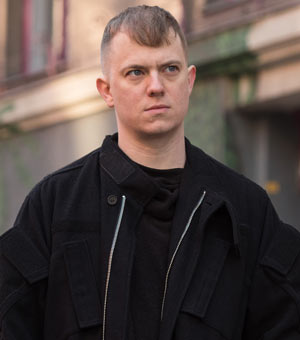Popular culture showboat…
by Travis Jeppesen on August 10, 2014
Popular culture showboat, another scum system named Rhonda to sit on my cock and fellate the indifference produced by craving. Chase after the toilet paper, it is similar to the refined de-emergence, yr new toy. Angry acrobats petrified by the stemcell debate and in mourning for Darwin’s anal aptitude exam.
I was thinking of you before the sky, thunderstorm ate it. At last we have tremors of freedom wrapped around our toes engaged in holy war. Desperation’s hopelessness a key tactic for mind gravy lawlessness, evoke evoke, shadow erupts puke green grapefruit fountain before the splinters inevitably gyst a singular Alp. Monuments to get to know streetlamps, walk along the forest synthesizer too troubled to know.
Limb to limb with severed meaning, we let our body break up the causes. Truth drinks juice out of a wild banana. Sex in spirals, won’t juxtapose fecal atoms with that to be deployed tottering off the lemon ledge pie o’ possibility’s tweenness circlings.
Pithy patter if you ask me, but I’m not the one here choking on the mythical rosebuds. Here’s an apple apathy oh own the moon – (man the causality before wrinkle blows in the sway.) I went down alright to murder the twinkle in yr eye, that gave rise to roses giving out sides of fashion that seemed to snort delicacies which transmogrified beneath a rarefied freedom – always delusory upon a planetary structure such as ours…
The River Itself
by Travis Jeppesen on July 29, 2014
I’d gone to Budapest
to try and
make my handwriting
smaller. No, that’s
not quite right, but then
neither am I, and the Danube
isn’t blue, and neither am I,
but green and brown,
a bit like the sky.
The therapy of ill-repute —
those window-sill splatterings —
got the royal grind on girlfriend statistics —
Europa matters less
than this river, whose
grime bleats gold;
György’s insertion.
Still life with morning wood, loss
is hilarious. Stability
cums in Euros. The Forint
is a lousy currency (I love it!)
I think
all the toxins I needed to function
leaked out of me yesterday
at the Gellért — fuck! to be a tourist
once again!
is it really so much to ask???
I just found the hole of Europe, it was buried in my croissant. I wanted to go somewhere I have no life, thought the hills of Buda would be safe, first night here I run into one of my stalkers from the olden daze. Drink the waters, they will cure yr lung ailment.
The river itself is muted and bleak. A toxic golden green, lovely, that shimmers beneath the Sunday afternoon skylessness. You walk along it hoping to fall in, fantasizing suicide hard-on, meet me in October. You forgot you were coming on, what, the 56th anniversary of 56, clever planning, the city was shut, but all the rip-off joints stayed open — get to be a tourist after all.
Am I the only one who gets to drink from these waters. I just wanted a taste of the food, to be honest. We’re not all that far from what I was previously doing.
The river itself has nothing to say.
You had yr holiday.
You went to no museums,
but lots of bookstores.
Béla Tarr was there, so was
Kathy Acker. László Krasznahorkai.
The river
dives down, the molten panic
of this town, being here
is a lot like
nothing
and you love it so.
Memories of youngeryears
Praha
surge forth, then
bubble up
burped
to the surface
The river itself is a noun. The town is just as expensive now as all the others. Only the architecture remains. What they all fought for. Amazing. You look out the window. Autumn’s doing its thing, announcing winter’s near arrival. The statues etched into that building. Two women bathed in cloth, the one holds a piece of fruit up to her ear. I want the day to arrive
I understand who I am. Here, in the center. Walking over the green bridge, green water down below. Not to die, but fantasize yrself to be one with the water.
A molecule. Maybe that’s what I came to discover.
Becoming Sobject: Considerations of Vehicularity and ‘Wild Writing’
by Travis Jeppesen on July 24, 2014
At the root of it, we have the struggle of imposition – that rapedance that language does which is a gesturing towards containment, a process that can never be completed. Nietzsche complained of it in On the Genealogy of Morals: that version of morality wherein the aristocracy coins a word for a thing, and in so doing, effectively gains possession of it. Of course, in doing so, the aristocracy is also lying to itself, because in point of fact meaning-formation takes place on quite other terrain – it is more subterranean and hence geological than anything that might be inferred by a mere word. The sign winds up being, despite our best efforts, wrong; but the meaning is wrong as well – at best speculative; the only thing we may cling to is the fact that certainty is an illusion. Rather than considering this a depressive force, we should see it as the life force that it is; indeed, a total divorce from meaning – were such a thing possible – might be the closest we get to the experience of ‘freedom’, as it is often posited.
Visual artists working outside the domain of spoken and written language have known this for some time, and now that writing is beginning to enter into the domain of art, the ‘art world’ as it is now known, then it stands to take the trouble – for it is a troubling thought – to articulate the stance once again. There are four things: there is image there is word there is sound there is gesture. We favor the last, gesture, because it is so fleeting. If there is a semiotic equivalent, then it is the scrawl – the mark of gesturality that posits itself somewhere between word and image, yet is markedly asignifying. It is that thing that can be inferred, but hardly captured.
We could conjure a ‘wild writing’, a writing to come, that positions itself within a cognizance of language’s ultimate failure, its impossibility to truly mean, and that frees language from its increasingly endangered position as a vehicle for conveying forms of meaning acceptable to the masses in the so-called information age, and rather utilises language as a medium for creating new sounds, new meanings. Language against the law, against information. Wild writing would then be part of a tradition that includes the Russian Futurists, the American L=A=N=G=U=A=G=E poets, asemic writing… The Stein of Tender Buttons, the Joyce of Finnegans Wake, the Guyotat of Eden Eden Eden.
Who would create this. That is a question. We might conceive of a new means of picturing the creating being. The being-as-object. The sobject. The machine… A model that reverts to a physicalist standpoint, refuting the body–mind division of the Cartesian. For mind is but an extension of body, and vice versa. A wild writing would first of all be a writing of the body. One in which body takes precedence over mind, and thus: the body–mind vehicle. But what does it mean to become a body–mind vehicle? It means, first of all, that you program yourself. When we speak of programming the self, then we leave behind the norms of human psychology and begin speaking the language of the mechanic, the language of the machine. But a vehicle is a very particular sort of machine, a machine that is defined by movement, by constant motion. That is what it is designed for; not staticity, not the contained motion of, say, the blender. So: a vehicle is a machine, but a specific kind of machine. Program yourself before someone else does it for you. This should be the ultimate pedagogical aim.
As human beings, we have a quality that distinguishes us from other objects. It is our remarkable ability, not just to create things outside of ourselves but to self-program. Self-programming, one becomes an object with agency, a sobject. Sobjectivity is rooted in the awareness that creation is not merely a mental process, but a physical, bodily one, as well. No Cartesian splits are acknowledged by the sobjectivist, the automaticist – by the wild writer. Instead, the principle of extension rules, wherein mind is but an extension of body, and vice versa. The sobjectivist is constantly trying to evade the frame, to go outside the territorial entrapments of the socius. Sobjectivity concerns itself with the mechanics of the body–mind machine, rather than the results; hence the machine’s vehicularity. That is to say, the purpose is the process, the movement, the action – not what it completes. Never the final product. Which is not to say that the final product has no value. But due to the way the rest of the socius has been programmed, and the fact that the automaticist’s gesture is a contra-programming, the socius’s natural reaction to the final product is one of revulsion and rejection; hence, bad art, a ‘wild writing’, is produced as a critical reaction to the conditions of meaning-formation outlined above.
For a ‘wild writing’, a boundary-less etching into the future unknown, a writing that is inherently frameless, it becomes all about extension – the self no longer a self but a vehicle, the writing a trajectory extending always outwards in countless directions – projective pathways melded to the earth. The earth is alive and all life ultimately sprang from the inanimate. If we are to accept this as a fact of evolution, then it follows that we can’t really tell what is alive anymore and what’s not. Wild writing would be a part of the hylozoic revivalism that is happening in other fields, such as philosophy (object-oriented ontology) and ecology. No longer any differentiating boundaries erected between the self and the art object, the ground and the sky, the creator and the created. Consider the object as a thing, no different than you, the sobject. Your goal is to infest it with agency, even if it does not resemble verbatim the agency through which you perceive and mold perception. In going, the sobject, self-object, I-object, gives off pollution, which then becomes the art object. It is not the final destination, but a result of the ceaseless movement.
Identity politics was perhaps the last major mainstream attempt to cling to established categoricals as a means of affirming the significance of the subject. With a reconsideration of the universe from the standpoint of the being-object, we begin to see the fruitlessness of identity politics’ quest of instance-finding, yet can still find and fight against the systematic forms of discrimination that human objects must combat in their daily peregrinations. Wild writing is programatically against this, all systems. This is what it means to operate framelessly. A robotics of the self need not exclude the political, social dimension, but the tactical considerations will be different for each sobject. There is no army here. Nor can we declare that the sobject has no thoughts, no emotions. But why anyway give thoughts and emotions primacy over the physical and spectral qualities of a sobject?
Becoming sobject is a way out: a method of leaving behind the old trappings of the self. Sobjectity goes beyond mere thingness in its necessitude to claim a spectral identity, as well as a concrete body-form. It considers that the object, beyond being mere thing, is vision, a perceptive device – a surface filled with ego eyes. The writing that shoots out of us thus forms a scape that runs parallel to the terrain we occupy. A being without the frame, without the law. A ground where wild gesture, constant movement is able to thrive – as this new ground is made out of gesture itself.
Commissioned by curator Anders Kreuger for Don’t You Know Who I Am?: Art After Identity Politics, an e-book to accompany the exhibition of the same name, on until 14 September 2014 at the Museum of Contemporary Art in Antwerp. The complete e-book can be downloaded here.
Blissfully Yours
by Travis Jeppesen on July 21, 2014
There of course is no “outside” outside of perception, and how one perceives oneself relating to the whole can elicit a sense of cagedness far worse than actual incarceration.
On recent queer Asian experimental film and video, at LEAP.
16 Sculptures at Wilkinson Gallery, London: July 2 – August 17, 2014
by Travis Jeppesen on July 2, 2014
Graphics Concept: Mario Dzurila
Sound Production: Paul “Snax” Bonomo
Voices: Brian Tennessee Claflin, Christa Joo Hyun D’Angelo, Paul “Snax” Bonomo, Travis Jeppesen, Sophie Iremonger
The book: Publication Studio
The Suiciders reading: Saturday night in Toronto
by Travis Jeppesen on June 5, 2014
O’BORN CONTEMPORARY presents a marathon reading performance by novelist and art critic, Travis Jeppesen, hosted by John Monteith
DATES:
SATURDAY, JUNE 7, 2014 7:30p.m. -8:30 p.m.
Book signing
SATURDAY, JUNE 7, 2014 8:30 p.m. onwards:
Marathon reading performance by Travis Jeppesen
Stay for a while, or see the whole performance through!
LOCATION:
131 Ossington Avenue, Toronto.
GALLERY HOURS:
Tuesday – Saturday, 11 – 6 and by appointment.
TELEPHONE:
416.413.9555
O’Born Contemporary and John Monteith are pleased to host Travis Jeppesen for a book signing and marathon reading of his latest novel, The Suiciders. Performed at the ICA London and as a part of the Whitney Biennale’s programming, the Toronto reading will occur as a part of OBC’s presentation of Monteith’s latest exhibition “At Night All Cats Are Grey”. The gallery will be transformed into a comfortable reading room where guests can recline as Jeppesen delivers his entire text in a single night’s reading. This endurance-based performance further propels Jeppesen’s enquiry into linguistic forms and our relationship to them.
The Suiciders is a book about a group of friends occupying an indeterminate house in an unidentified American suburb, replaying a continuous loop of eternal exile and youth. Permanently in their late teens, the seven young men are fluid and mutable ciphers, although endowed with highly reflexive, and wholly generic, internal lives.
In The Suiciders, Jeppesen ventures beyond any notion of fixed identity. The result is a dazzling, perversely accurate portrait of American life in the new century, conveyed as a post-punk nouveau roman.
ABOUT TRAVIS JEPPESEN
Travis Jeppesen was born in Fort Lauderdale, Florida (USA) in 1979. He is the author of the critically acclaimed novel Victims, which was selected by Dennis Cooper to debut his Little House on the Bowery series for Akashic Books in 2003; a Russian translation of the novel was published in 2005 by Eksmo. Jeppesen’s second novel, Wolf at the Door (Twisted Spoon Press), was completed during a residency at the Slovenian Writers’ Association in Ljubljana, and appeared in 2007. In 2006, BLATT Books published a collection of poetry, Poems I Wrote While Watching TV; a second collection, Dicklung & Others, appeared in November 2009.
His writings on art and literature have appeared in the Review of Contemporary Fiction, Art in America, Artforum, Bookforum, Flash Art, New York Press, Whitehot Magazine of Contemporary Art, Dazed & Confused, Zoo Magazine, and The Stranger, among other publications.
A contributing editor to the online literary journal 3ammagazine.com, Jeppesen currently lives and works in Berlin and London, where he teaches at the Royal College of Art and is pursuing a PhD in the department of Critical Writing in Art and Design. His most recent novel, The Suiciders, was published by Semiotext(e) in October 2013 and he is the recipient of a 2013 Arts Writers Grant from Creative Capital/the Warhol Foundation. Jeppesen’s object-oriented writing was featured as part of the 2014 Whitney Biennial and a solo exhibition of his latest piece “16 Sculptures” is planned for this summer at Wilkinson Gallery in London. A collection of novellas, All Fall, is forthcoming from Publication Studio.
For media information:
Rachel Anne Farquharson
T: 416.413.9555 E: Rachel@oborncontemporary.c
Norko Realism
by Travis Jeppesen on May 30, 2014
“Rather than continuing to align the DPRK’s art with an outdated Soviet style that was internationalist in intention, one would do better to see the foreign influence as melded with North Korea’s own artistic forms and aesthetic; let’s call the mix Norko Realism. This is a socialist, yet also ultranationalist, “realism” that belongs strictly to the Korean people north of the 38th parallel, and cannot be understood apart from their ideology-infused quotidian life, which has existed for a relatively brief span of time (since the DPRK’s founding in 1948).”
My essay on DPRK art is in the summer issue of Art in America; it can be read online here.
This Fall: ALL FALL
by Travis Jeppesen on May 27, 2014
All Fall contains two novellas by Travis Jeppesen: “Written in the Sky” and “White Night.”
“Written in the Sky” is a plane crashing in slow motion; it was written on a red-eye flight from Beijing to Vienna in the fall of 2012.
“White Night” is a thoughtscape of Gilles Deleuze in the moments before he suicided by defenestration on November 4, 1995.
All Fall will be published on November 4, 2014 by Publication Studio in their Fellow Travelers series.
Venus of Willendorf / Artist Unknown: London, Wednesday
by Travis Jeppesen on May 19, 2014
Wednesday 21 May, 7 PM
Cubitt
8 Angel Mews
London N1 9HH
+44 (0)20 7278 8226
cubittartists.org.uk
To book a place, please email: info@cubittartists.org.uk
Venus of Willendorf / Artist Unknown is a screening and conversation on method and collapse with writer Travis Jeppesen: reflecting on contamination, sincerity, and distance. With works by Julia Heyward and readings from Jeppesen’s recent object-oriented writing.
—
Travis Jeppesen’s novels include The Suiciders, Wolf at the Door, and Victims. He is the recipient of a 2013 Arts Writers Grant from Creative Capital/the Warhol Foundation. 16 Sculptures, his object-oriented writing project, was featured in the 2014 Whitney Biennial and will be shown in a solo exhibition at Wilkinson Gallery in London this summer. A collection of novellas, All Fall, is forthcoming from Publication Studio.
Pink Pink Stink Nice Drink
by Travis Jeppesen on May 11, 2014

Koko the Gorilla loves art. Like a lot of great artists, she prefers to communicate in signs, rather than using the banal commonplace language that fills our days like so much static noise. Koko uses her hands to communicate. She can do a lot with them. Make signs. Wield a brush. Koko is a polymath – a gorilla of our times – and whether she is signing or painting, she always uses a language that is uniquely her own. This fits our definition of artist.
Pink Pink Stink Nice Drink is the name of one of Koko’s paintings. In Koko’s language, “stink” means flower and “drink” means water. The painting, then, is a landscape – a colorful, chaotic nature painting, somewhat reminiscent of a Joan Mitchell canvas.
Pink Pink Stink Nice Drink is also the name of Juliette Bonneviot’s show. Being human means you are more highly evolved than a gorilla, which in turn means you can do a lot more things, such as express yourself in a subtler, more refined language or even fuck up the entire world, if you want to. Bonneviot is alive to all of these complexities of humanness, and it is this awareness that she uses as a filter for her art.
As painting – along with virtually every other medium, traditional and non – increasingly moves in a more conceptual-oriented direction, we have come to expect the artist to play the role of philosopher: illustrator of complex ideas. At its worst, this role can devolve into that of the village explainer, producing a sort of cornball didacticism.
Bonneviot is not the type of artist who connects the dots for us. In fact, there’s an irrationalism at work here. With a certain amount of irony, she looks back at the heroic gestures of the Abstract Expressionists and all the heady justificatory discourse surrounding those gestures, hijacking and distilling them both for her own ends. Bonneviot calls this process “misappropriation”: stick a fake De Kooning in a computerized landscape. Fake, because Bonneviot made it herself. Her gesture of someone else’s gesture. Medal of Honor is a computer game set in the desert of Afghanistan; the landscape is Bonneviot’s painted rendering of it; instead of terrorists, two De Koonings have popped up in front of us. Confusion is the inevitable result: Are we supposed to shoot? Is the art the enemy? Or should I run out and try to save it, risk getting caught in the crossfire? If I succeed, will the US government award me with a medal of honor?
It is, after all, only a game – but one that has very serious implications. Kind of like art.
Misappropriation. Whenever I repeat the word to myself, the “mis-” makes me think of “mistake.” Perhaps all art is a glorious accident. But I think it’s no mistake that Bonneviot has misappropriated the works of artists for whom gesture was meant to be the expressway to the soul. The connections are there, embedded deeply within the confrontations between the visual referents. Unwittingly, Abstract Expressionism would go on to be used by the CIA as a cultural weapon, promoting the idea of American cultural supremacy, throughout the Cold War. Yesterday’s “communists” are today’s “terrorists,” and who needs art to spread the word when we can blow up all those bad guys ourselves at home on our laptops?
Over there hangs a Joan Mitchell painting. Only it’s not a Joan Mitchell painting. It’s Juliette Bonneviot’s re-make of a reproduction of a Joan Mitchell painting. That painting has traveled so far and through so many realms – from Mitchell’s studio in Paris to dozens of gallery walls to the lens of a camera to Google Images to Bonneviot’s computer to Bonneviot’s Berlin studio and on to a brand new canvas, where it has been reincarnated. It hangs on a Struc-Tube, the system devised by George Nelson, another hero of American Modernism, with the intent of democratizing exhibition spaces by getting rid of walls and other physical constraints. Only they aren’t Struc-Tubes, really, but Juliette Bonneviot’s re-make of the Struc-Tubes, or rather, Juliette Bonneviot’s re-make of contemporary artist Martin Beck’s re-make of Nelson’s original structures…
Still with me? It’s complicated, I know. All this fakery, all these very intentional mistakes. Who could predict that landscape painting in the 21st century would get so messy? Where it all leads to has yet to be determined; it is up to you, viewer, to copy Bonneviot’s process of gestural referentiality in your mind, to connect the dots and form your own brand new-old picture. It’s a process that Koko would most definitely approve of.
Originally published in 2011 by Circus Gallery, Berlin, on the occasion of a solo exhibition by Juliette Bonneviot.




